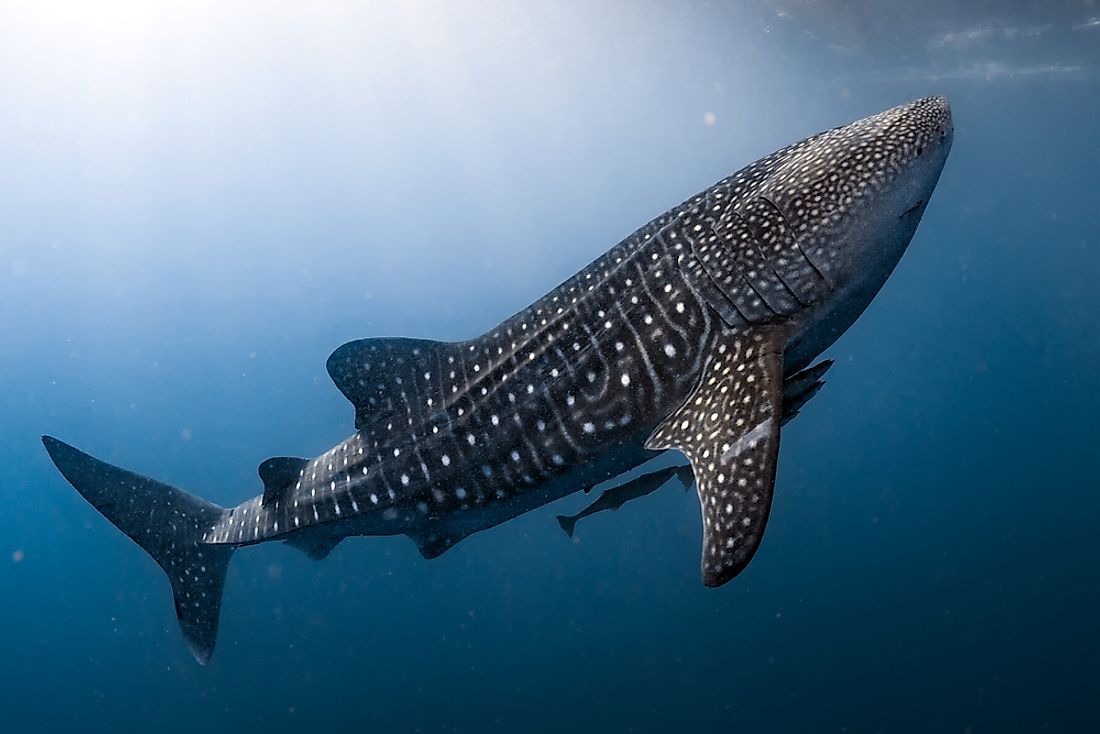Whale Shark Facts: Animals of the Oceans

The whale shark is the largest known shark at the moment and it holds the record for the largest non-mammalian vertebrate. Scientifically known as Rhincodon typus, the whale shark is the only surviving member of the Rhincodontidae. They usually have a lifespan of 70 to 100 years and have been known to pose minimal or no danger to human beings.
Physical Description
The head of the whale shark is usually wide with two small eyes at the front part of the head. Just behind their eyes are spiracles. They have a 5 large pair of gills. The mouths of whale sharks can be as large as 1.5 meters wide. The wide mouths have 300 to 350 rows of tiny teeth. In the mouths, there are also at least ten filter pads. They are usually grey in color with white bellies. The pale yellow stripes and spot patterns on their skin are usually unique to each individual. For its locomotion purposes, whale sharks have a pair of dorsal and pectoral fins that are very large in size. An average male whale shake is estimated to be 8 meters long and weighs 9 tons. In fact, they are the largest non-cetacean animals in the world.
Diet
The whale sharks are filter feeders. They have filter pads in their mouths to facilitate an easier feeding process. The filters help separate food substances and water. Food separation from the water is done by the cross-filtration process. The large amounts of water are then discharged through the gills. Interestingly, the numerous teeth in their mouths play no significant role in their feeding. The teeth are vestigial structures. Whale shark’s diet is made up of planktons which include copepods, krill, smaller fish and their eggs, and the larvae of Christmas Island red crab. Occasionally, they feed on the clouds of eggs during the mass spawning of fish and corals. A juvenile whale shark feeds on approximately 25 kgs of plankton on a daily basis.
Habitat and Range
Whale sharks are found in all the tropical and warm temperate seas. They are pelagic, preferring to dwell in open seas and shallow waters rather than the deep oceans. They are known to migrate depending on the seasons for breeding and feeding purposes. In some instances, they have been observed to dwell in lagoons, coral reefs and in the estuaries of rivers.
Behavior
Whale sharks have been observed to be friendly to sea divers. In fact, the divers have occasionally caught a ride by holding on their fins. Younger whale sharks are known to be friendlier than the adult whale sharks. When whale sharks are captured, they tend to become inactive and weak until they are released. In their feeding, they have been observed to cough to release stuck food particles from their food filters.
Reproduction
Sexual maturity of whale sharks is attained after approximately 30 years. Whale sharks are ovoviviparous, meaning quite a large number of offspring develop in the body of the female whale sharks. In 1996, a female whale shark was captured and it was discovered that 300 pups were developing in her womb. However, the pups are not conceived at the same time. The females do retain sperms from a single mating partner and thereafter produce a steady stream of pups.







